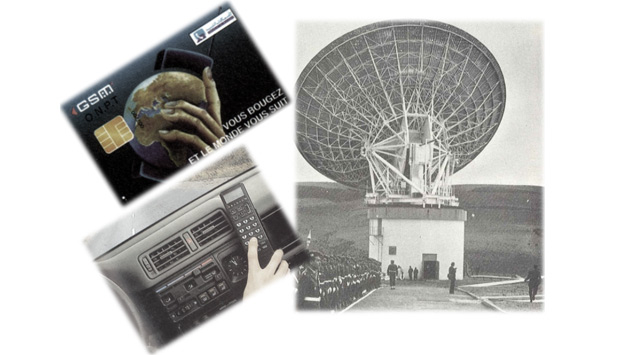MOBILE TELEPHONES AND SATELLITES

Mobile telephones
These days, we tend to forget that we once survived without mobile phones. You will now hear the story of this small appliance that, for many of us, has become absolutely indispensable.
Mobile communications began with equipment using valves which were later replaced by transistors comprising active electronic components used to amplify signals.
The original mobile devices were huge and had very high power requirements. That is why their initial use was limited to automobiles.
In the nineteen eighties of 20th century, cell phone technology was developed. From 1991 onwards, the industry succeeded in producing smaller portable terminals, which represented a crucial development that led to the rapid expansion of the service.
In 1987, the NMT (Nordic Mobile Telephone) service was established in Morocco. Later, GSM (Global System for Mobile) was introduced in April 1994.
The use of this technology with many offers is now widespread across the country.
Satellites
Thanks to advances in space research, it became possible to use a satellite which, at sufficient altitude, could circumvent the curvature of the Earth. These are known as geostationary satellites. While apparently not moving, with respect to the Earth, they actually whizz around at the same angular velocity as the planet. From a distance of 36,000 km, such satellites can cover a third of the Earth's surface. Intercontinental communications were made possible by three satellites: one over the Atlantic Ocean, one above the Pacific and the other over the Indian Ocean. Note that this distance introduces a half second delay in conversations, which is not considered a significant inconvenience.
If you had the opportunity to use a mobile phone a few years ago, you might remember the tiresome echo effect you could hear during a conversation. Technology later helped address this problem by developing devices called echo suppressors. Nowadays, a newer, even more developed and powerful version has been installed called an echo canceller.
Television services are a major consumer of satellite channels. Using satellites ensures that broadcasts can be made from places that are difficult to access. Satellites provide the most appropriate platform for this technology.
Finally, it is interesting to note that Morocco inaugurated its first Terrestrial Station for Satellite Communications in Sehoul, in the Rabat region, on January 7, 1970.

